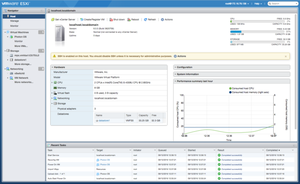Vsphere 6.0 Desktop Client
- Vsphere 6.0 Desktop Client Download
- Remote Desktop Client
- Vsphere 6 0 Cracked License Youtube
- Vsphere 6.0 Desktop Client Download
Attention, Internet Explorer User Announcement: VMware Communities has discontinued support for Internet Explorer 7 and below. In order to provide the best platform for continued innovation, VMware Communities no longer supports Internet Explorer 7. VMware Communities will not function with this version of Internet Explorer.
Vsphere 6.0 Desktop Client Download
Please consider upgrading to Internet Explorer 8, 9, or 10, or trying another browser such as Firefox, Safari, or Google Chrome. (Please remember to honor your company's IT policies before installing new software!) • • • •.
Remote Desktop Client
There is an Update Manager Client plug-in that runs on the vSphere Client (The vSphere Client is a desktop client) Update Manager Web Client that runs on the vSphere Web Client.( vSphere Web Client is a Web-based client.). How to install VUM 6.0, vmware update manager 6.0, vsphere update manager 6.0, VUM 6.0. Behringer xenyx 1204usb manual.
Now download videos in all formats from Youtube using GenYoutube video downloader. Running man full episodes english sub. Using GenYoutube you can download any type of videos from the Youtube.
Any help would be appreciated: ISSUE: So adding a disk greater than 4TB to an existing virtual machine FAILS in the Vsphere desktop Client. QUESTION #1: What is the command or sequence of commands to add this exact Seagate 6TB drive (below) to an existing VM???? I'm going to add approx 17 of these 6TB drives (up to the maximum allowable of course).
Vsphere 6 0 Cracked License Youtube

First, you need to create datastores on the disks, then you create virtual disks on the datastores. You can create one datastore per disk if you want, or you can RAID them together via software or hardware RAID and create a larger datastore spanning all the disks. I don't believe you can just pass the HDD directly through to the VM. Edit: Disregard, I'm an idiot, I thought that you were trying to pass the HDD directly through to the VM before creating a datastore on the physical disk and then creating disks on the datastore. Edited Jan 4, 2016 at 21:02 UTC.
Yes, datastores have already been created. The first post shows the example result of listing one of the devices. Next step is to add each of the drives to the VM. This is where the desktop Vsphere 6 client fails anything over 4TB. The documentation shows a couple possible options. 1) buy a license and use the web client 2) use vmkfs tools to grow the existing disk from 4TB to 6TB 3) use vmkfs to add the virtual 6TB disk My post is asking for help with the sequence and example commands to do option #2 or #3.

Vsphere 6.0 Desktop Client Download
Hello Gabrielle and thanks for the reply, Yes, I have previously created the data stores and I can see them under /vmfs/volumes. Example for just one of the 8 drives: Directory /vmfs/volumes/568881ba-4496678d-72ef-d8cb8aa3fff5 dynamic link /vmfs/volumes/Seagate 6TB sata10 snZ4D2D6S3 -> 568881ba-4496678d-72ef-d8cb8aa3fff5 There is also a directory for 'datastore1' which is the SSD where I originally installed the Linux Mint VM 'gmedia' and I now see the 'gmedia-flat.vmdk' size 64Gb and the 'gmedia.vmdk' size 527b files. I also the the 'gmedia' folder in with the 4TB datastore I added. So the fog is now clearing. Is your example (below) correct?
Comments are closed.